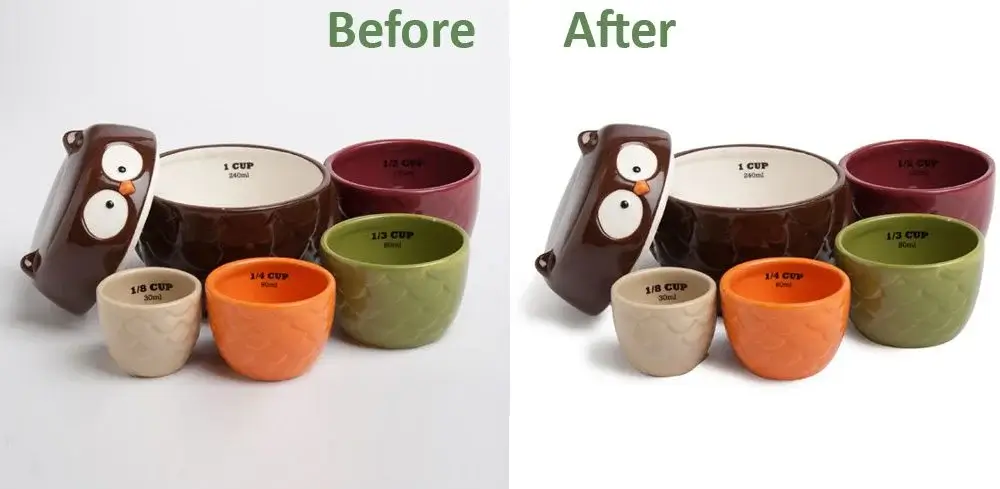Photo Background Shadow Remover: Complete Guide
Removing background shadows from photos can drastically improve the visual appeal of your images, making them look more professional and clean. Whether you are a beginner or an advanced user, this guide will walk you through the process using various tools like Photoshop, Lightroom, Capture One, and GIMP.
Why Remove Background Shadows?
Removing background shadows can:
- Enhance the clarity and focus of the main subject.
- Improve the overall aesthetics of the photo.
- Make the image more versatile for various uses.
Photography Angles for Minimizing Shadows
Before diving into editing, it’s crucial to take photos with minimal shadows. Here are some tips:
- Use natural light: Shoot during the golden hour (early morning or late afternoon) when the light is soft and shadows are minimal.
- Avoid direct overhead light: This can create harsh shadows. Instead, use diffused light sources.
- Use reflectors: Reflectors can help bounce light and reduce shadows.
- Experiment with angles: Adjust the position of your subject and the camera to find the best angle with minimal shadows.
Types of Pictures Requiring Background Shadows Removal
Removing background shadows is crucial in various types of photography to ensure the images look professional, clean, and focused on the main subject. Here are some specific scenarios where background shadow removal is often required:
-
Product Photography for E-Commerce:
- Amazon Listings: Amazon has strict guidelines requiring product photos to have a pure white background without shadows to ensure the product is clearly visible.
- Etsy, eBay, and Other Marketplaces: Similar to Amazon, these platforms prefer clean, shadow-free images to enhance the product’s appeal and visibility.
- Online Stores: Businesses with their own online stores often need product photos with removed shadows to maintain a consistent and professional look across their website.
-
Real Estate Photography:
- Property Listings: Shadows can make rooms look smaller and less appealing. Removing shadows helps showcase the property in the best light.
- Virtual Tours: Clear, shadow-free images are crucial for creating high-quality virtual tours.
-
Portrait Photography:
- Professional Headshots: For resumes, LinkedIn profiles, and corporate websites, removing shadows ensures the focus remains on the person’s face and expression.
- Model Portfolios: Clean images without shadows highlight the model’s features and clothing better.
-
Event Photography:
- Weddings: Editing out shadows can help maintain the focus on the bride, groom, and important moments.
- Corporate Events: Shadow-free images are essential for professional presentations and marketing materials.
-
Food Photography:
- Restaurant Menus: Clean, shadow-free images make dishes look more appetizing and professional.
- Cookbooks and Food Blogs: High-quality photos without shadows enhance the visual appeal of the recipes.
-
Fashion Photography:
- Catalogs and Lookbooks: Removing shadows ensures that the clothing and accessories are the main focus.
- Online Fashion Stores: Consistent, shadow-free images improve the overall shopping experience.
-
Automotive Photography:
- Car Dealerships: Clean images without shadows highlight the vehicle’s features and details.
- Automotive Magazines: Professional, shadow-free images are crucial for high-quality editorial content.
-
Art and Craft Photography:
- Art Galleries: Shadow-free images ensure that the artwork is presented in the best possible way.
- Etsy Shops: Clean images without shadows help handmade products stand out.
-
Jewelry Photography:
- E-Commerce Listings: Removing shadows from jewelry photos helps showcase the details and craftsmanship.
- Catalogs: Clean, professional images without shadows are essential for high-end jewelry catalogs.
-
Furniture Photography:
- E-Commerce Listings: Clean images without shadows help to highlight the design and details of the furniture.
- Interior Design Portfolios: Shadow-free images ensure the focus remains on the layout and design of the space.
Removing Background Shadows in Photoshop
Step 1: Open Your Image
- Launch Photoshop and open the image you want to edit.
- Duplicate the background layer to keep the original intact.
Step 2: Use the Clone Stamp Tool
- Select the Clone Stamp Tool from the toolbar (shortcut: S).
- Choose a soft brush and adjust the size as needed.
- Hold the Alt key (Option on Mac) and click on an area close to the shadow to sample it.
- Paint over the shadow to blend it with the surrounding area.
Step 3: Use the Healing Brush Tool
- Select the Healing Brush Tool from the toolbar (shortcut: J).
- Choose a soft brush and adjust the size.
- Hold the Alt key (Option on Mac) and click to sample an area.
- Paint over the shadow. The tool will blend the sampled area with the shadowed area.
Step 4: Use the Patch Tool
- Select the Patch Tool from the toolbar (located under the Healing Brush Tool).
- Draw a selection around the shadow.
- Drag the selection to a clean area. The tool will replace the shadow with the selected clean area.
Removing Background Shadows in Lightroom
Step 1: Open Your Image
- Launch Lightroom and import your photo.
- Go to the Develop module.
Step 2: Use the Adjustment Brush
- Select the Adjustment Brush from the toolbar (shortcut: K).
- Set the Exposure, Shadows, and Clarity sliders to positive values to lighten the shadowed area.
- Brush over the shadow to reduce its visibility.
Step 3: Use the Clone/Heal Tool
- Select the Clone/Heal tool from the toolbar (shortcut: Q).
- Set the tool to Heal.
- Click on the shadow and drag to a clean area to replace the shadow with the clean area.
Removing Background Shadows in Capture One
Step 1: Open Your Image
- Launch Capture One and import your photo.
- Go to the Edit module.
Step 2: Use the Healing Brush
- Select the Healing Brush from the toolbar.
- Set the brush size and hardness.
- Hold the Alt key and click to sample an area.
- Paint over the shadow.
Step 3: Use the Clone Brush
- Select the Clone Brush from the toolbar.
- Set the brush size and hardness.
- Hold the Alt key and click to sample an area.
- Paint over the shadow.
Removing Background Shadows in GIMP
Step 1: Open Your Image
- Launch GIMP and open the image you want to edit.
- Duplicate the background layer.
Step 2: Use the Clone Tool
- Select the Clone Tool from the toolbar (shortcut: C).
- Choose a soft brush and adjust the size.
- Hold the Ctrl key and click to sample an area.
- Paint over the shadow.
Step 3: Use the Healing Tool
- Select the Healing Tool from the toolbar.
- Choose a soft brush and adjust the size.
- Hold the Ctrl key and click to sample an area.
- Paint over the shadow.



